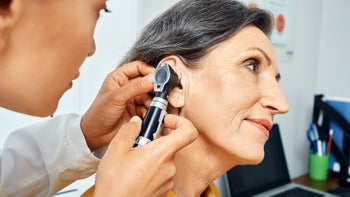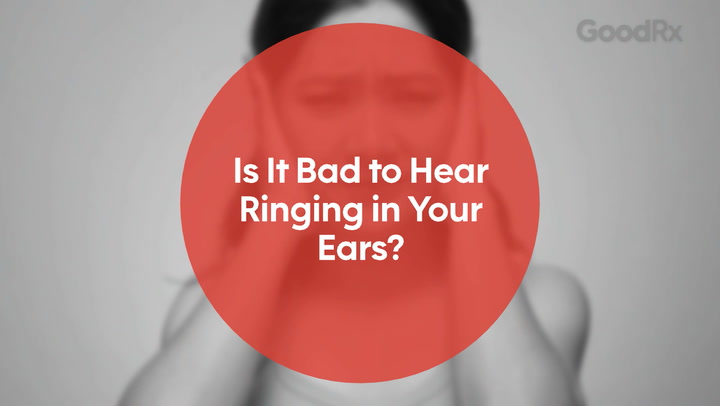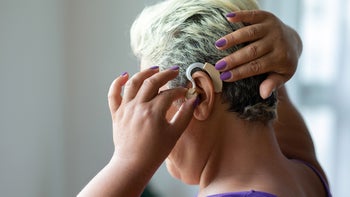
What Causes Otitis Media, and How Do You Treat It?
Key takeaways:
Otitis media is inflammation in the middle ear. Symptoms may include ear pain, fever, irritability, and trouble hearing. Acute symptoms are likely caused by an infection.
The eustachian tubes help drain the middle ear. When the tubes are inflamed, it leads to a backup of fluid. This backup, in turn, can lead to an acute otitis media infection.
Antibiotics are usually recommended for treatment. But sometimes otitis media can resolve on its own.

Earaches are a real pain. While they can happen to anyone, they are a frequent complaint among children.
Otitis media is the term for ear pain caused by inflammation in the middle ear. But it’s not always caused by an infection.
An infection in the middle ear is acute otitis media. It’s more common in children. In fact, approximately 80% of children will have at least one episode of acute otitis media.
Prescription Savings Are Just the Beginning

What causes otitis media?
Otitis media is the combination of ear pain, fluid behind the eardrum, and inflammation. It often occurs when the inner ear tubes (eustachian tubes) aren't functioning correctly.

Eustachian tubes connect the middle ear to the back of the throat. They help balance the pressure inside your ears by allowing fluid to drain. Conditions like a cold, upper respiratory tract infection, or seasonal allergies can cause inflammation, preventing proper drainage of the tubes.
When fluid doesn’t drain from the tubes, this can cause the fluid to collect in the middle ear space. This standing fluid can create an environment for bacteria to grow and cause infection. Haemophilus influenzae, Streptococcus pneumoniae, and Moraxella catarrhalis are the most common bacteria that cause acute otitis media.
What are the symptoms of otitis media?
Symptoms of otitis media can vary. But there is often a history of recent upper respiratory symptoms like runny nose, cough, or sore throat.
Other symptoms can include:
Ear pain
Feeling of fullness in the ear
Drainage from the ear
Fever (for acute otitis media)
Decreased hearing
Irritability in children and babies
How is otitis media diagnosed?
Your healthcare provider will use your symptoms and a physical exam to diagnose otitis media. If you have ear pain, your provider will use a tool called an otoscope to examine the ear. This allows your provider to look for fluid behind the eardrum. They will also look for signs of inflammation such as bulging and redness of the eardrum.
Read more like this
Explore these related articles, suggested for readers like you.
How do you treat otitis media?
Treatment for otitis media may vary based on several factors. For adults, your provider will typically give you antibiotics to treat your infection.
For children, age, severity of symptoms, and other medical conditions may influence the treatment plan.
For most children who have only mild symptoms, you can watch for 48 hours to see if the symptoms improve on their own. One reason this is done is to avoid potential side effects from medications. Diarrhea, nausea, vomiting, and medication allergies are common with antibiotic use in children. Antibiotics are also avoided when possible to prevent antibiotic resistance. This would make it harder for the antibiotic to work the next time you need it.
In the meantime, your provider may recommend over-the-counter pain relievers. If the symptoms don’t improve after a couple of days or worsen, you will likely need antibiotics to treat it.
There are some circumstances in children where the risks of complications are greater. In these situations, antibiotics are recommended first. These risk factors may include:
Younger than 6 months
Severe symptoms (like high fever, dehydration, ill-appearing)
Weakened immune system
Recurrent otitis media (frequent back-to-back infections)
Sometimes otitis media can become chronic or long-lasting. In these cases, referral to an ear specialist is recommended. They may recommend other treatments such as ear tubes (tympanostomy tubes). These are tubes inserted into the eardrum to help normalize pressure and allow fluid to drain. This can decrease the need for continued antibiotics.
How is otitis media different from other types of ear infections?
The ear is often described in three parts: the inner ear, middle ear, and outer ear. Each of these areas can be inflamed or infected. Based on the part of the ear affected, the causes, symptoms, and treatments will differ.
The three main types of ear infections include:
Otitis media (middle ear): This is the most common type of ear infection. It’s caused by inflammation in the middle ear and may be associated with a recent upper respiratory infection. Symptoms often include ear pain, fever, and decreased hearing.
Otitis externa (outer ear): This is also known as “swimmer’s ear.” It’s often caused by bacteria that thrive from water being trapped in the ear canal. It commonly causes drainage from the ear, along with pain, redness, and swelling of the outer ear.
Labyrinthitis (inner ear): These infections are usually caused by a virus. They don’t cause ear pain, but they do cause vertigo (spinning sensation). Symptoms typically include dizziness, nausea, and vomiting.
How serious is otitis media?
Otitis media is usually a mild infection that is not serious or life-threatening. You can usually manage the pain with medications like ibuprofen or acetaminophen. And in some cases antibiotics help to treat the infection.
Sometimes, severe or untreated otitis media can lead to complications. These may include:
Eardrum perforation
Secondary infections
Hearing loss
Eardrum perforation
Inflammation and bulging of the eardrum can cause it to rupture. If you are having severe pain, a rupture may sometimes cause immediate relief. You will also typically have some drainage from the ear.
Perforated eardrums can heal without further treatment in most cases. But you should always contact a medical provider if you have symptoms of a ruptured eardrum. In some cases, this can lead to permanent hearing loss.
Secondary infections
Bacteria from untreated otitis media can sometimes spread to nearby areas. This can sometimes include infections spreading to parts of the skull or brain.
Acute mastoiditis is the most common serious complication of otitis media. This is a bacterial infection of the mastoid (area of the skull behind the ear). If untreated, this infection can be life-threatening by spreading to the brain and surrounding areas.
Hearing loss
The hearing loss from the inflammation of otitis media is usually temporary. If untreated, inflammation may affect the delicate structures in the ear. And this can lead to more permanent hearing loss. When this occurs in young children during language development, it can cause speech delays.
If you have symptoms of hearing loss, you should seek medical attention from an ear specialist.
When do you have to seek treatment for a possible ear infection?
Although ear infections can resolve on their own, it’s best to be evaluated by a healthcare provider. This is important for you to have the proper diagnosis and treatment plan. Reasons to seek medical attention right away may include:
Fussiness or irritability in young child or infant
Frequent tugging at the ear
Decreased hearing
Fever
Fluid draining from the ear
Loss of balance
The bottom line
Otitis media is usually a mild condition that causes inflammation of the middle ear space. It is usually caused by a viral or bacterial infection.
Although antibiotics are commonly used, sometimes otitis media can resolve on its own. But never ignore the symptoms. Untreated infections can lead to complications with permanent effects. Your healthcare provider can help you decide the treatment plan that is best for you.
Why trust our experts?


References
American Speech-Language-Hearing Association. (n.d.). Ear infections (otitis media).
Cassano, P., et al. (2020). Acute mastoiditis in children. Acta Bio-medica: Atenei Parmensis.
Gaddey, H. L., et al. (2019). Otitis media: Rapid evidence review. American Family Physician.
Harmes, K. M., et al. (2013). Otitis media: Diagnosis and treatment. American Family Physician.
MedlinePlus. (2020). Ear tube insertion.
Miyamoto, R.T. (2022). Otitis media (acute). Merck Manual.
Sakulchit, T., et al. (2017). Antibiotic therapy for children with acute otitis media. Canadian Family Physician.





























